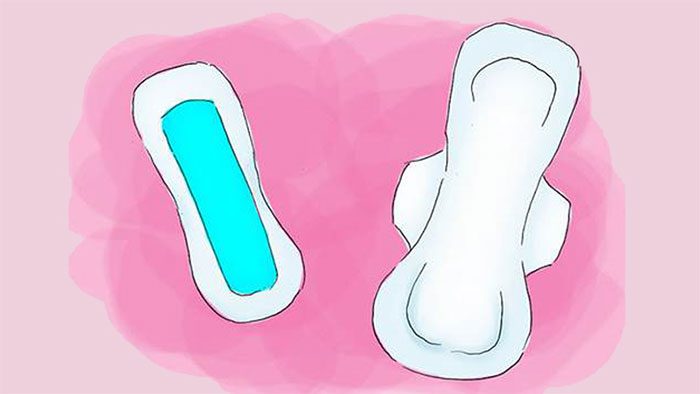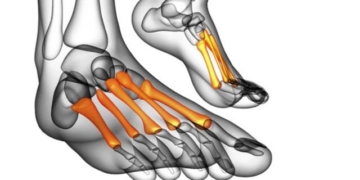Recently, the Daily Mail reported on statistical analysis data from Health News regarding the prices of the most commonly used menstrual products – pads (also known as sanitary napkins) – and found significant differences across 20 countries.
The highest cost for purchasing menstrual pads is in the United Arab Emirates (UAE). In this country, women pay 23 cents (26,000 VND) for each pad, totaling 68 USD (1.6 million VND) per year, amounting to 2,668 USD (65.7 million VND) over a lifetime.
Women in Germany and Finland spend the least on menstrual pads. In these countries, a single pad costs only 0.04 USD (986 VND), totaling 12.57 USD (310,000 VND) per year and 490 USD (12 million VND) over a lifetime.
However, researchers noted that lower-cost products do not necessarily mean they are used by more people, as income levels vary greatly between countries. This means that some individuals may think they are spending less, but in reality, that amount may represent a larger percentage of their income.
The average menstrual cycle begins at age 12 and continues until women reach menopause at an average age of 51, with menstruation occurring once a month – equating to approximately 468 times in a lifetime.

On average, each person will experience 468 menstrual cycles throughout their life. (Illustrative image).
Surprising Actual Figures
The analysis reveals that women use an average of 11,400 pads throughout their lifetime.
To calculate the costs, researchers examined the cheapest pad prices in 30 countries, converting them to US dollars and multiplying that amount by 11,400.
Following the UAE, the United States ranks second for the highest prices: 0.15 USD (3,600 VND) per pad, 44 USD (1 million VND) per year, and 1,710 USD (42 million VND) over a lifetime.
Australia ranks third, with a price of 0.18 USD (4,400 VND) per pad, 40 USD (968,000 VND) per year, and 1,561 USD (38 million VND) over a lifetime.
Sweden is fourth and Canada is fifth.
After Germany and Finland, Japan and Poland have the cheapest pad prices, at 0.06 USD (1,400 VND) per pad, 17 USD (419,000 VND) per year, and 661 USD (16.2 million VND) over a lifetime.
The United Kingdom has the third lowest cost, with a price of 0.63 USD (15,000 VND) per product, 18.42 USD (454,000 VND) annually, and 718 USD (177 million VND) over a lifetime.
Spain, Denmark, France, and Austria all share the fourth lowest prices, with Mexico ranking fifth among the cheapest places.
High Income Also Comes with Headaches
No matter the price of pads, when considering the average annual income in a country, these products can represent a larger percentage of consumers’ earnings. This can affect accessibility to these products.
Researchers noted that in Germany and Finland, which have the cheapest sanitary products, pads are “extremely accessible” relative to the average annual salary.
The average annual income in Germany is 53,675 USD (1.3 billion VND) – meaning that in one year, the cost of purchasing pads accounts for 0.91% of a person’s salary. In Finland, where the average annual salary is 52,000 USD (nearly 1.3 billion VND), spending on pads represents 0.94%.
Meanwhile, in the UAE, despite having a higher average income of 64,080 USD (nearly 1.6 billion VND) per year, the cost of menstrual products is nearly five times higher, accounting for 4.2% of total annual income.

On average, women use 11,400 sanitary pads throughout their lifetime. (Illustrative image).
The analysis highlights that when checking pad prices, consumers must consider additional taxes levied on products. In the United States, the tax on women’s sanitary products is referred to as the “pink tax.”
These products are taxed at a higher rate than everyday goods, but similar increases do not apply to male-targeted products such as condoms and erectile dysfunction medications.
In the U.S., 23 states and Washington have banned taxes on sanitary items, with an additional 12 states considering similar legislation.
Opponents of the “tampon tax” argue that these products are necessities and should not be taxed. They contend that the added costs create unnecessary burdens for those who need pads every time their “period” occurs.
Globally, countries such as the UK, Canada, Ireland, France, Spain, and the Netherlands do not impose “tampon taxes” on women’s hygiene products.
However, in Hungary, Denmark, and Sweden, taxes are among the highest, ranging from 25 to 27%.
Scotland is the only place in the world that provides free menstrual products to its citizens, a law that was passed in 2020 and enacted in 2022.


















































